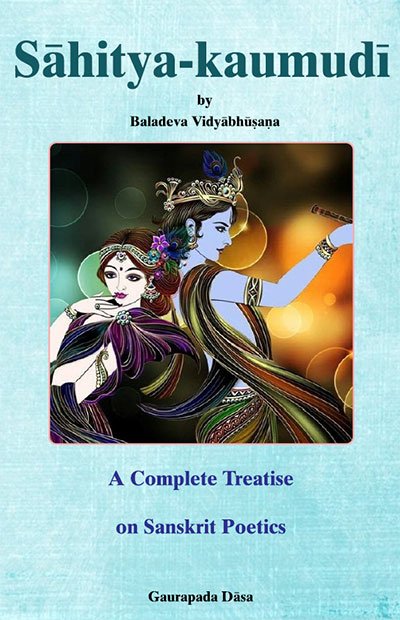Sahitya-kaumudi by Baladeva Vidyabhushana
by Gaurapada Dāsa | 2015 | 234,703 words
Baladeva Vidyabhusana’s Sahitya-kaumudi covers all aspects of poetical theory except the topic of dramaturgy. All the definitions of poetical concepts are taken from Mammata’s Kavya-prakasha, the most authoritative work on Sanskrit poetical rhetoric. Baladeva Vidyabhushana added the eleventh chapter, where he expounds additional ornaments from Visv...
Text 2.22
एवम् उपाधिम् उक्त्वा तद्-आश्रयम् आह,
evam upādhim uktvā tad-āśrayam āha,
After stating the characteristics in this way, he mentions its substratum:
tad-bhūr lākṣaṇikaḥ ||2.14a||
tat-bhūḥ—is the place of it; lākṣaṇikaḥ—an indirectly expressive term.
The basis of Indication is a lākṣaṇika word.
śabda iti sambadhyate. tad-bhūr lakṣaṇāśrayaḥ śabdo lākṣaṇikaḥ kathyate.
The word śabdaḥ (word) is added to complete the syntactical connection. “The basis of Indication (tad-bhūḥ = lakṣaṇāśrayaḥ) is said to be a lākṣaṇika word (an indirectly expressive word).”
Commentary:
In this context, the term “basis” signifies the means of communication.
